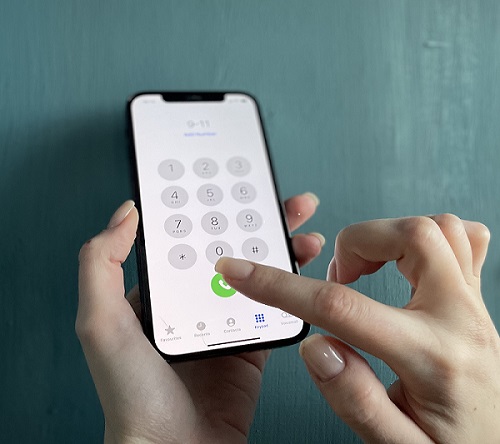Every business needs a robust phone system that suits its needs. Even a small company with 1 or 2 employees needs a business phone system rather than relying on a personal line or cell phone. Consumer phone lines do not offer business-level features such as a phone book, call forwarding, or virtual extensions.
As your staff grows, so do your communication requirements. Each new employee needs their phone number and ways to communicate with colleagues in other departments or offices. Your staff must speak with you, each other, and your customers.
This is where phone extensions come into play. With extensions, you can connect all of your company’s links to each other. Plus, it gives customers the opportunity to communicate with the person or department they want based on their needs. For large companies, phone extensions are vital to communicate effectively.
What is a Phone Extension?
Extensions are short numbers you can assign to an employee, a team, or a department in your company. They are an internal code allowing users to communicate quickly and easily with their colleagues. Your customers can also bypass the normal auto attendant by dialing the extension number of the person they want to talk to. For this reason, the feature is also called extension dialing.
Internal and external callers use the same extension numbers in different ways.
Suppose Alice and Bob work in the same office. Alice’s extension is 103, and Bob’s number is 104. If Alice wants to talk to Bob, she can pick up her phone and dial 104.
Extension numbers should be added to the main business number for external callers, such as customers or vendors.
For example, if your company phone number is 987-6543, the customer should dial 987-6543-103 to speak to Alice or 987-6543-104 to speak to Bob.
Differences Between Home Phone Extensions and Business Phone Extensions
Telephone extensions have been around for a long time—almost as old as landline telephone technology. However, they function differently in a business or home context.
Home Telephone Extensions
An extension allows users to answer a call from anywhere in the house for a home line. Basically, it means that you have multiple devices connected to your main number. When someone calls your phone number, all the devices in the house will ring, allowing you to answer the call from anywhere.
But it should be noted that the house has only one line. If you are talking to someone on the second device, no one else in the home can call from another. The line is busy for everyone who is not on the call.
Business Telephone Extensions
Phone extensions in a business system work differently. It allows a company to purchase fewer lines than the total number of employees. It is possible to share several outside lines through extensions. This system works because employees will not use the phones at all times.
For example, you don’t need to buy ten lines if you have ten workers. You can get by with 3 to 4 phone lines and extensions, depending on your needs. One employee using an extension does not block everyone’s lines.
How Do Phone Extensions Work?
Traditionally, extension numbers consist of 4 digits, such as 1002 or 2563, etc. Analog phone systems do not offer the possibility of longer or shorter extensions. Fortunately, VoIP phone service providers also offer 3 or 5-digit VoIP extension dialing. You can even assign extensions such as 4 or 65 to an employee.
Project teams or departments can also have their own extensions. It allows users to contact colleagues in other departments or divisions of the company.
Phone extensions work in conjunction with the auto attendant function for business lines. If a customer does not know the extension number of the person they are trying to reach, the auto attendant allows them to select the department and forward the call to the correct extension.
On the other hand, if a customer knows the extension number, they can skip the auto attendant’s speech and dial the extension directly.
The Difference Between Virtual Numbers and Extensions
Extensions work very similarly to virtual numbers in that they both forward calls to other devices. Both are virtual and are not tied to a specific location or zip code. Both are composed of numbers, although extensions are usually shorter. The difference between the two depends on the context in which they are used.
- A virtual phone number is usually associated with the IP address of a specific device, whether that device is a desk phone, a cell phone, or a computer. When someone calls the number, the call is forwarded to the device attached to that IP address. When you call someone through the VoIP system, this is the number that others can see on their phone screen. It allows staff to make and receive calls on different devices while using the same business number.
- An extension is not associated with a specific device or its IP address. Instead, it is part of the VoIP phone system itself. Charges for creating and using a virtual number are set out in the contract with your VoIP provider. Extensions are usually free, although there may be a limit on the maximum number you can have. Extensions can take you to a person, a department, or even a voicemail inbox.
Adding Users and Extensions in VoIPstudio
Adding a new user or extension is quite simple in most VoIP phone systems. For VoIPstudio, log into the online control panel and select “add a new user.” You can assign them a specific extension by setting up a new employee.
This short video shows you how to add users to VoIPstudio.
What if you already have staff and user accounts but want to add an extension? You can edit an existing user and add the extension you wish to use.
Suppose a staff member moves to a different office. You don’t have to change anything; your current extension will still work even if you change the physical location. If you have department extensions, you can update an employee’s number if they change divisions or get a promotion.
How to Dial a Phone Number with an Extension
Dialing a phone extension is the same as you would use for a VoIP phone number. The only difference is how internal and external calls are handled.
- Internal calls originate within the organization, regardless of physical location. Therefore, two employees in different offices, or even countries, can still talk to each other without incurring long-distance charges, through Direct Inward Dialing (DIDs). Continuing the example above, Alice can call Bob by dialing 104 regardless of where they work. Extension dialing is especially crucial if your team is dispersed across multiple locations.
- External calls originate outside the organization and go to an endpoint within the company. Therefore, customers, suppliers, partners, and other parties calling one of your employees can dial the extension. Still, if you have enabled the auto attendant feature in your phone system, it is usually in addition to the central business number; even if callers do not know the extension, they can be routed to the correct person.
How are Calls Routed to an Extension?
As you’ve seen, extensions are not much different from phone numbers from the user’s point of view. But they offer crucial functionality. Therefore, it is essential to understand how calls are routed to different extensions after the caller dials the number.
Routing calls to phone extensions involves one of several algorithms that determine how calls are handled. Most organizations will have different rules depending on the recipient, whether an individual, a team, or a department.
The first step is to create a directory that directs callers to specific departments or individuals. When the caller dials the extension or selects an option, the call is routed accordingly.
Set Up Dialing Rules for Callers
Users can also create rules about which devices should ring for incoming calls. Suppose the sales manager has a desk phone, a business phone, a laptop, and the application on their cell phone. They can choose to have incoming calls ring on all devices simultaneously or in a specific order until they answer the call.
Set Up Dialing Rules for Departments
You may also want different rules for different departments. For example, the human resources department may not receive many external customer calls. In that case, you can route all calls to the manager first and then to a team member only if the manager is unavailable. The manager acts as a single point of contact for callers. Subsequently, they can assign tasks to specific employees.
Establish Dialing Rules for Teams
A technical support team, on the other hand, is likely to receive hundreds of calls from customers. You can set up incoming calls to ring all extensions within the team at once (simultaneous outbound) or cycle through each extension until someone answers the call (shift routing).
In this case, sequential call routing can be detrimental. The calls ring at the extensions in the same order each time, which means the first employee on the list must answer more calls, delaying their other tasks.
If your sales or service agents must meet targets (closed deals or resolved tickets), everyone should be able to answer incoming calls.
Benefits of Using Extensions
Since extension dialing has been around for a long time, you may be familiar with its use in a business context. However, hosted VoIP services provide a more robust features for phone extensions. They are more versatile, and you can use them in various situations that were not possible before.
See below for the benefits of using extensions in your business:
1. You Can Share Multiple Lines
As an organization grows, extensions go from a luxury to a necessity. Even a small business can benefit from using extensions instead of assigning a line/number to each employee on staff. The savings are quickly realized whether you have ten lines or a thousand numbers.
It’s not just the price of an extra line. Because hosted VoIP systems increase traffic to the network, each additional line means provisioning more bandwidth. Extensions help you make the most of available resources.
2. Easy Calls for Internal Use
Calling colleagues within the company becomes much easier with extensions. Your staff does not have to remember long numbers for each person they must contact. A 3 or 4-digit extension is much easier to remember. For a small company with five employees, it may not mean much. But what if a worker needs to communicate with 5 or 6 teams during the day? Shorter extensions make it easier for everyone.
3. Allow Customers to Bypass the Auto Attendant
The auto attendant is a handy feature, especially for larger companies with multiple departments or divisions. A caller can reach the right person even if it is their first time or they don’t know the correct phone number to dial.
However, it can be tedious for callers to wait on hold when they already know who they want to reach. Extensions allow customers to quickly get the account manager or representative if they know the correct extension.
4. Saves Time and Improves Productivity
Organizations can save many hours by enabling extensions for individual users. Employees can transfer incoming calls to the right person much faster with extensions.
Are you adding a couple of users to an existing conference call? Extension dialing makes it much faster, and extensions make a tangible difference in productivity.
5. Test and Evaluate Advertising Campaigns
Traditional advertising campaigns have generally used mass media to reach their audience. But today’s ad campaigns are more targeted to different market sub-segments and are often tailored to specific criteria. Thanks to social media and online advertising, companies can run multiple campaigns side by side.
But how do you measure the effectiveness of each campaign? One option is to use phone extensions, especially if you want potential customers to call. Suppose you are testing three different ads on social networks. You can set up a different extension for each ad and track incoming calls accurately with VoIP Call Tracking.
6. Maintain a Local Presence in New Markets
Companies always face risks when expanding into new territories and markets. This is another scenario where phone extensions come in handy.
You can create a virtual phone number with a local area code and attach several extensions to it. Since extensions do not consider your employees’ physical location, Seattle staff can answer calls from California. California customers will only see a local number on their screen and will not have to know where the agents are.
7. Improve User Mobility and Flexibility
Many offices are experimenting with hybrid workdays in which some employees alternate in-office and telecommuting days.
This format gives you more flexibility in hiring and retaining employees. But your customers still expect someone to answer the phone and solve their problems.
Using extensions helps you maintain a professional presence for your customers, even when employees work in different locations. In addition, an employee may work with a desk phone in the office, use a laptop at home, or use a cell phone while traveling.
8. Tracking, Logging, and Analysis of Call Patterns
Another excellent use for phone extensions is to track and analyze call patterns, specifically for customer service departments such as sales or technical support. An organization will often have multiple products and services. Whether or not you have dedicated teams for each product line, it is helpful to see which products need the most support and why.
Phone extensions can help you put customers in the correct queue where experts can answer their queries. It will minimize the number of times a call has to be transferred before resolution. In addition, extensions can help you answer questions such as:
- Which product list has a more extended call wait time and needs more agents?
- Do agents need additional training if customers call back several times for the same problem?
- Does a product need better documentation as customers ask for simple queries?
- Do you need to reassign agents during peak hours or schedule shifts to cover more hours?
Phone extensions are nothing new, but hosted VoIP services have extended their capabilities to new situations
How can VoIPstudio Help to Manage Phone Extensions?
VoIPstudio provides an intuitive system to manage your company’s phone extensions efficiently:
- Easy Assignment and Modification of Extensions: With VoIPstudio, you can assign and modify extensions from an online control panel. This allows you to quickly adapt the configuration of extensions according to the changing needs of your team.
- Scalability: VoIPstudio facilitates the scalability of communications in your company. As you grow and add more employees, you can add new extensions without hassle.
- Mobility and Remote Work: Extensions managed through VoIPstudio allow employees to work from anywhere without losing connection to the company’s phone system. This is essential for remote or hybrid teams.
- Auto Attendant Integration: VoIPstudio allows extensions to be integrated with the auto attendant, facilitating the routing of calls to the correct extension according to the options selected by customers.
- Statistics and Analysis: VoIPstudio offers tools to analyze call patterns, optimize extensions’ distribution, and improve customer service efficiency.
I Have Frequently Asked Questions About Phone Extensions.
What is a Phone Extension?
It is a short number used to direct calls to a specific employee or department within a company, facilitating internal communication.
How do I Configure an Extension in a VoIP System?
You can configure extensions from the VoIP system control panel, assigning them to employees or departments as needed.
How do I Dial an Extension from an External Phone?
First, dial the company’s main number and then enter the extension when the system prompts.
How many Extensions can a Company Have?
It depends on the VoIP provider, but most allow you to add many extensions according to the company’s needs.
Can I Use Phone Extensions in Several Company Locations?
Yes, with VoIP systems, extensions are not limited by physical location, which allows their use in several places.











